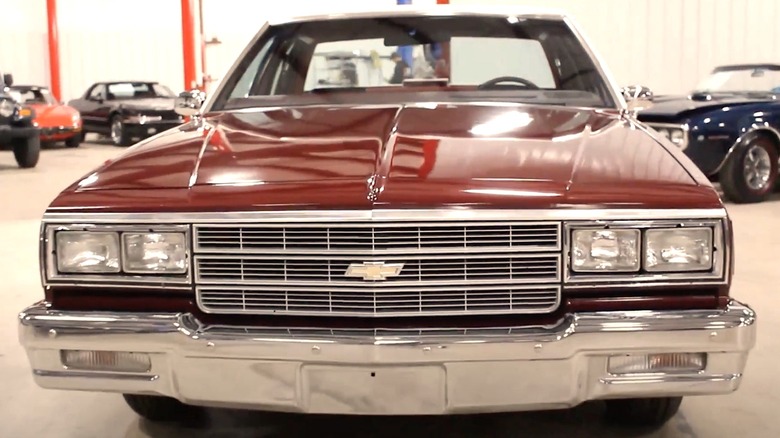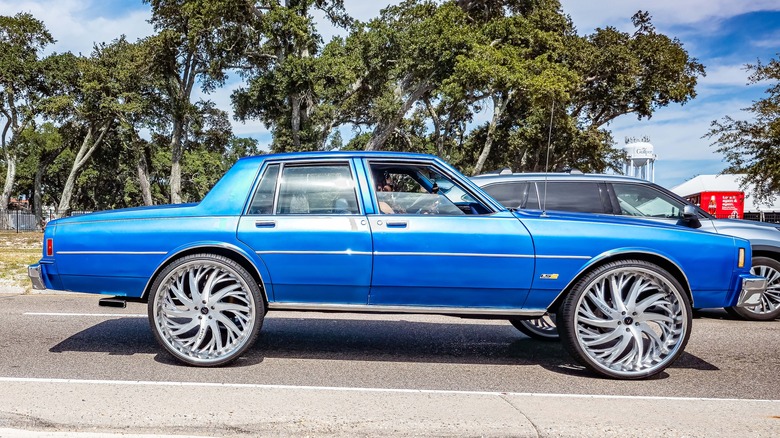What Is A Box Chevy And Which Years Was It Made?
For some classic car enthusiasts, the 1970s and 1980s styles were a bit of a mixed bag in terms of major U.S. automakers. Sure, those decades saw the likes of Ford, Chevy, and Dodge releasing some of the more iconic muscle cars into the black top wilderness. But major manufacturers like Chevrolet were also releasing full-sized builds like the legendary Caprice and the long-in-production Impala, which were known less for their sleek lines and powerful engines than for being boxy behemoths that arguably prioritized torquey engines, handling, and outright practicality over style.
Despite the wide frames, straight lines, and sharp edges giving those vehicles the look of a rolling box, the vehicles were distinctive in their almost humdrum appeal. By the 1990s, the boxy builds unexpectedly even became popular with customizers attached to the so-called Dirty-South hip-hop scene, who began tricking them out in sometimes outlandish fashion before affectionately summoning the nickname "Box Chevy."
There may be some debate about which precise Chevy builds fall under the Box Chevy shingle, particularly as model years can differ depending on their status as in the overall Donk car culture. But the general rule of thumb is that most of the big, boxy Chevy Sedans and Coupes produced in the '70s and '80s fit into the Box Chevy mold. Yes, B-Body legends like the Chevy Caprice and Impala builds from those eras are prime examples of the style, though other GM models like the Oldsmobile Cutlass may also be included.
Box Chevys from a certain period are popular with Donk customizers
The boxy frames that gave the Box Chevys their name had largely disappeared by the 1990s, with the manufacturer smoothing out the vehicle's sharp angles for smoother, more rounded out frames. That was true even of the Caprice, whose straight-edged frame had long been seen roaming the streets of America donned in the typical regalia associated with law enforcement agencies. It is, perhaps, with a less than subtle wink that the vehicles have found a second life roaming those streets tricked out Donk style with oversized wheels, lift packages, and flashy rims.
If you're at all familiar with Boxy Chevys, you know that the upgrades don't always stop with wheels, lifts, and rims, as some owners go all-in on customizing the square-framed builds with eye-catching paint schemes, posh interior flourishes, and even souped-up engines. You might also know that not every car that can be deemed a Box Chevy is a full-blown Donk.
Per most accounts, the term "Donk" only refers to the boxier Chevy builds that were manufactured between 1971 and 1976. However, the reasoning behind those specific cutoff dates is not entirely clear. Nor is the origin of the term "Donk," with some factions claiming the name was inspired by the Impala logo — which might vaguely resemble a Donkey even as it is clearly modeled after the African Antelope which gave the vehicle its name. Still others think Donk references how the rear end of the Chevy's bounce like a pack mule once they're lifted. Whatever the case, Box Chevys and Donks remain some of the most uniquely customized vehicles on the road today.

